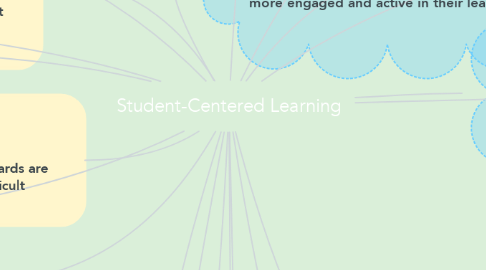Student-Centered Learning
by Erica Bareuther

1. f. Weaknesses - * Assessment may be difficult * Making sure academic standards are aligned to project may be difficult
2. e. Strengths - * Students feel connected to community * Students must collaboratively work with each other * No easy way out for students * Opportunities for choice
3. d. Effectiveness in real world use - Service learning can definitely work in a school setting! I think it is very well suited for high school and college age, but can also work well in younger age groups with more structure. I see service learning as a win-win for everybody!
4. c. Examples of Implementation - Cleaning up a local park, working on a home-building project, writing letters to nursing home citizens, launching an environmental awareness campaign, packing food bags for people who don’t have enough food
5. b. Rationale - Community service is long engrained in education. Service learning takes it a step further by combining it with academic standards.
6. e. Strengths - * Students can work at their own pace * Teacher is available to help those that need extra help * More variety of learning styles targeted * Students get practice using technology * Teachers can check student progress
7. c. Examples of Implementation - Scholastic News online, Khan Academy for math practice, Zearn (a math curriculum that has a teacher lesson component and an online practice component), apps like SeeSaw.
8. b. Rationale - The rational for Blended Learning is that it provides ways to differentiate for each student to make learning a more individualized experience.
9. a. What is it? - Blended Learning combines digital content and activities with face-to-face, in classroom content and activities. It began being used more mainstream in education in the early 2000s, and now many schools use blended learning in some way.
10. a. What is it? - Service learning combines academic standards with real-world community service projects. Students plan an implement a service project that allows them to help others while also meeting their educational needs.
11. Service Learning
12. f. Weaknesses - * Takes a lot of planning - many moving parts * May need extra resources - time, people, money, etc. * If student responsibility and buy-in isn’t there, it will be difficult
13. e. Strengths - * Students have a higher purpose to their learning and are engaged * Hits many standards with one unit * Community can benefit * School and community partnerships form
14. d. Effectiveness in real world use - PBL is definitely real-world! It is a great way to get students involved in their schools and communities, and for them to see how what they are learning in school will help them in life. I do not think we should use it for EVERY topic we learn in school, but it is able to be applied to many of the standards that we teach.
15. c. Examples of Implementation - There are many amazing examples of PBL. I personally am doing a PBL project in my classroom right now. We are building underwater robots (ROVs) to learn about energy, and learning how we could use them to clean up the local lake! Other examples are making food to learn about social issues and incorporate math skills, designing and building “tiny homes,” teaching the community about a topic, and so on.
16. b. Rationale - When students feel that their learning has real-world implications and is meaningful beyond school, they will be more engaged and active in their learning.
17. f. Weaknesses - * Teachers need ways to hold the students accountable * Less face time between students and teacher * Less chances for collaboration between students (not always) * Distractions of the internet may be present
18. d. Effectiveness in real world use - I think blended learning is very effective in the real-world classroom. I use Blended Learning all the time and I think it is a wonderful way to differentiate for each students' needs.
19. a. What is it? - Project-based learning is a style of teaching where students engage in real-world projects to guide their studies. They spend a unit trying to answer a question or create something, and then present it to an authentic audience at the end.
20. Project-Based Learning
21. Blended Learning


